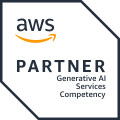Edge AI: Real-Time Audio Classification for Enterprise IoT and Devices
TL'DR
- Edge AI is transforming how enterprises process and respond to audio data—right at the source.
- In 2025, audio classification is no longer a cloud-only task.
- From industrial fault detection to voice-driven healthcare diagnostics, running ML models on embedded devices means lower latency, enhanced privacy, and smarter autonomy.
- This blog breaks down the architecture, risks, and strategic decisions needed to make audio intelligence work at the edge.
Executive Summary
This deep-dive explores how Edge AI enables real-time, on-device audio classification for enterprise-grade use cases. It covers the fundamentals of audio representation, deployment strategies for embedded systems, and the architectural trade-offs CTOs must navigate to scale such systems securely and reliably. The piece introduces risk management frameworks like FMEA for model failures, deployment patterns for field validation and OTA updates, and vertical-specific insights across healthcare, industrial IoT, and consumer devices. If audio is part of your product's future, Edge AI is the infrastructure you need to get it right—without compromise.
Introduction: Why Audio Needs Intelligence at the Edge
In the post-cloud era, enterprises aren’t just building apps that run faster—they’re building systems that understand their environment in real time. Sound is one of the richest, most underleveraged data sources in this equation.
The challenge? Audio is messy, unstructured, and computationally heavy. Sending it to the cloud creates latency, privacy, and bandwidth risks. Enter Edge AI: a shift in computing where models run locally—on devices, not data centers. This shift is supported by market signals too — the global Edge AI software market is projected to grow from $2.47 billion in 2025 to $8.91 billion by 2030, at a CAGR of 29.2%. For audio classification, that means faster insights, reduced overhead, and a step closer to human-level interaction models.
This isn’t about labs or prototypes. It’s about deploying production-ready intelligence where milliseconds matter. This deep dive explores how enterprises can architect, deploy, and scale Edge AI systems for real-time audio classification—across industrial, healthcare, and consumer environments.
Understanding Audio: From Vibrations to Vectorized Intelligence
Audio starts as pressure waves—captured by microphones and digitized through sampling. Three fundamental properties define it:
- Time Period: Duration of one wave cycle (seconds)
- Amplitude: Loudness or energy (decibels)
- Frequency: Number of cycles per second (Hz), which humans perceive as pitch
Most enterprise use cases (speech, alerts, machinery sounds) operate within 100 Hz to 10 kHz. Beyond capturing the waveform, the challenge lies in converting it into structured features that models can reason about.
Fourier Tools: How We Understand Sound Composition
- Fourier Series: Used for periodic signals (e.g., machine humming). Breaks a signal into sine and cosine components.
- Fourier Transform: Ideal for non-periodic signals like speech. Converts time-domain data into frequency-domain.
- Short-Time Fourier Transform (STFT): Applies the Fourier Transform in rolling windows—crucial for real-time detection of transient sounds.
These transformations underpin how edge systems detect patterns, anomalies, or speech from ambient sound.
When to Use Fourier, STFT, or MFCC in Audio Processing
ML-Ready Audio: Representation Engineering
Raw audio is computationally expensive. A 10-second 16kHz clip = 160,000 samples. Models trained directly on waveforms are rare in edge contexts. Instead, we use compact, informative representations:
- MFCC (Mel-Frequency Cepstral Coefficients): Mimics human auditory perception. Common in voice and speech applications.
- Log-Mel Spectrograms: Scales frequencies logarithmically. Preferred for emotion detection and acoustic monitoring.
- Chroma Features: Good for musical data. Maps frequencies to pitch classes.
- Learnable Frontends: Emerging approach where models learn feature extraction directly—requires more compute but simplifies the pipeline.
In most production pipelines, STFT or MFCC are extracted locally using DSPs before feeding a compressed model.
Key Benefits of Edge AI in Audio Classification
Before diving into how Edge AI models are built and deployed, it's worth highlighting why they’re worth building in the first place. For enterprise environments where timing, autonomy, and privacy matter, Edge AI offers structural advantages that cloud-native AI simply can’t.
Real-Time Responsiveness
Edge devices process audio instantly—crucial for safety triggers, voice interfaces, or predictive maintenance. No server roundtrips, no lag.
Offline Intelligence
Audio systems keep working even when disconnected. Whether in factories with poor connectivity or remote clinics, edge models don’t stall without a network.
Enhanced Data Privacy
Audio never leaves the device. This architecture aligns with HIPAA, GDPR, and enterprise data governance policies.
Lower Operational Overhead
Minimizing bandwidth and cloud compute usage can reduce infrastructure costs at scale—especially for fleets of devices.
Local Adaptability
Edge models can be fine-tuned per location (e.g., factory floor vs office), improving accuracy without retraining centrally.
Scalable Deployment Footprint
Each device becomes a node in a distributed inference network, allowing scale without stressing centralized systems.
These benefits are why Edge AI is no longer just a technical preference—it’s a strategic lever for enterprises building intelligent, decentralized platforms.
Architecting Audio Classification at the Edge
This hardware investment isn’t hypothetical — the Edge AI accelerator market is projected to grow from $10.13 billion in 2025 to over $113 billion by 2034, underscoring enterprise demand for scalable edge inferencing solutions.
A typical Edge AI pipeline for audio looks like this:
Microphone → Signal Conditioning → Feature Extraction (STFT/MFCC)
→ Quantized Model (CNN/Transformer) → Classification
→ Actuator/Trigger/Event
Key Architectural Choices:
- Hardware:
- MCUs (STM32, Cortex-M): Ideal for ultra-low-power devices
- NPUs (Syntiant, Hailo, Google Coral): Optimized for parallel inferencing
- DSPs (Qualcomm Hexagon): Best for on-device preprocessing
- Model Types:
- 1D CNNs: Lightweight, good for temporal patterns
- CRNNs: Combine spatial and sequential learning
- Distilled Transformers: Better at capturing long-term dependencies in speech
- Compression Strategies:
- Quantization (8-bit, 4-bit)
- Pruning
- Weight clustering
TinyML models are particularly well-suited for audio classification on MCUs where memory and compute constraints are severe.
Deployment Strategy: Operationalizing Audio Models at the Edge
Deploying audio classification models at the edge introduces a fundamentally different set of operational challenges from standard cloud-based MLOps. While most cloud systems can afford to iterate rapidly, ship frequent updates, and collect performance metrics at scale, edge environments demand a more surgical approach.
Unlike cloud infrastructure, embedded devices have tight memory footprints, limited bandwidth, and long lifespans in uncontrolled environments. Every deployment decision must account for versioning, reliability, and maintainability—not just model accuracy.
OTA Model Updates
Shipping a new model to a thousand edge nodes isn't a simple git pull. It requires version-controlled deployment artifacts, model integrity checks, cryptographic signatures, and rollback paths. Enterprises must implement robust CI/CD pipelines for ML artifacts that consider firmware compatibility, device health monitoring, and patching cadence.
Acoustic Validation in Field Environments
A model that performs at 94% accuracy in a lab may collapse in a high-decibel factory or under reverberant ceiling conditions. Before production rollout, edge models must be tested under real-world ambient noise conditions across geographies and device form factors. This validation must be repeatable and include corner-case stimuli (e.g., overlapping sounds, muffled alerts, echoes).
Managing Model Drift and Sensor Variability
Over time, changes in hardware (microphone degradation, placement shift) or ambient acoustics can erode model accuracy. Enterprises should embed lightweight calibration routines and maintain telemetry logs to detect and address drift proactively. Models may need dynamic thresholding based on environmental context (e.g., time of day, seasonal humidity) or feedback loops from user interaction. This is especially crucial for real-time audio event detection in critical environments like industrial safety or elder care.
Observability for Edge ML
Observability doesn't stop at system uptime. Edge ML pipelines must include:
- Real-time classification confidence scores
- Error reporting for misfires or low-confidence predictions
- Logging for false positives/negatives over time
These metrics inform model retraining, update prioritization, and SLA adherence.
Edge MLOps isn’t about moving fast and breaking things—it’s about moving deliberately and never breaking production.
Failure Modes and AI Risk Management in Edge Audio Systems
When audio classification runs at the edge, failures are no longer theoretical—they directly impact user safety, trust, and system responsiveness. The risk profile spans across prediction accuracy, environmental variation, and hardware unpredictability. To manage this complexity, leaders must treat audio model deployment as a safety-critical engineering discipline.
Common Failure Scenarios
- False Positives: A model might misinterpret ambient clinks as glass breaking or classify overlapping conversations as alarms. These errors can trigger unnecessary responses, degrade UX, or cause alert fatigue.
- False Negatives: More dangerous are missed detections—where a critical event like a baby crying, gas leak hiss, or call for help goes unnoticed. This is especially concerning in healthcare or industrial safety contexts.
- Concept Drift: Changes in ambient acoustics, user behavior, or environmental noise profiles (e.g., day vs night shift) cause the model’s accuracy to degrade over time.
- Hardware Variability: Slight differences in microphone sensitivity, placement, or wear-and-tear produce inconsistent feature inputs—even with the same audio event.
Applying a Structured Risk Lens: FMEA for Edge AI
Many enterprises now use Failure Modes and Effects Analysis (FMEA) to assess model risks.
For each failure mode:
- Assign scores to Impact, Likelihood, and Detectability
- Compute a Risk Priority Number (RPN = I × L × D)
- Prioritize mitigation strategies based on the RPN
Example: Glass break misclassified as door slam
- Impact: High (security response triggered)
- Likelihood: Medium (similar frequencies)
- Detectability: Low (no feedback loop)
- RPN = 8 × 6 × 7 = 336 → High risk
Mitigation Strategies
- Environment-specific calibration: Normalize input signals across mic types and settings
- Real-world data augmentation: Include synthetic blends and field recordings in training
- Adaptive thresholding: Adjust model output thresholds based on local noise floor or time-of-day context
- Confidence scoring with fallback: If confidence is below X%, suppress or defer the decision
- Periodic telemetry + retraining loop: Log misfires and correct via OTA retraining updates
Failure in edge audio is inevitable without planning. But with structured mitigation, you can localize, isolate, and respond—before customers or users feel the impact.
Industry Relevance: Where Audio Classification Wins
Edge AI for audio isn't a niche capability—it’s rapidly becoming a foundational layer across industries where latency, privacy, and offline resilience are business-critical. Audio is a passive sensor that requires no user input and works even when visual systems fail. When embedded locally, it becomes a reliable signal stream that drives intelligent decision-making.
Industrial IoT
- Why It Matters: Industrial machines often produce sound before they fail. By listening for early indicators—bearing rattle, pump cavitation, or compressor anomalies—edge audio models enable predictive maintenance without the complexity of vision systems. That aligns with broader enterprise momentum: 93% of manufacturers are expected to integrate AI into core operations in 2025, and 83% say it's already delivering business impact, per a prediction by CEVA Edge AI Technology Report (2025).
- Business Impact: Reduces unplanned downtime, lowers maintenance costs, and improves worker safety.
- Technical Requirements: Models must filter out ambient noise from heavy machinery, detect anomalies in milliseconds, and work on battery-powered edge nodes.
Healthcare
- Why It Matters: Auscultation and vocal patterns offer non-invasive windows into patient health. Devices that can process these locally—like digital stethoscopes or on-device speech recognition tools and diagnostic platforms—unlock real-time clinical insights without cloud dependency.
- Business Impact: Enables early diagnosis, telehealth expansion, and HIPAA-compliant edge intelligence.
- Technical Requirements: Models must handle high inter-patient variability, microphone inconsistency, and deliver medical-grade inference confidence.
Retail and Smart Consumer Devices
- Why It Matters: Voice triggers, ambient context detection, and emotion analysis improve customer experience without increasing backend complexity.
- Business Impact: Drives personalization, reduces cloud costs, and enhances responsiveness.
- Technical Requirements: Models must balance inference speed with device constraints, and preserve user privacy under tightening data regulations.
Edge audio isn’t a vertical-specific feature—it’s an intelligent layer that turns everyday devices into context-aware systems. Enterprises that embed this intelligence now will lead in personalization, automation, and trust.
Strategic Considerations for CTOs and CIOs
Audio classification at the edge isn't just a technical build—it's a long-term architectural decision that influences compliance posture, infrastructure load, and product design philosophy. Here's how technology leaders should evaluate the shift.
Cloud vs Edge: The Decision Matrix
For use cases like smart assistants, security triggers, and clinical-grade audio monitoring—Edge clearly wins.
Total Cost of Ownership (TCO)
While edge hardware introduces upfront complexity (model compression, testing, deployment), the ongoing cost of bandwidth, cloud compute, and security reviews is dramatically reduced. More importantly, edge systems decentralize scaling—removing choke points and cost spikes under usage bursts.
Product Trust and Differentiation
User sentiment around privacy is increasingly a differentiator. Audio that stays on-device aligns with GDPR, HIPAA, and CCPA guidelines, and enhances user trust—especially in consumer or healthcare contexts.
Security Posture
With edge audio models, you reduce the attack surface by eliminating the cloud link entirely. No data in transit, no need for encryption-at-rest pipelines, and far less regulatory exposure. That said, model integrity and device-level hardening become critical.
Executive Takeaway
Edge audio is no longer an R&D sandbox—it's a strategic layer of the modern product stack. If your platform relies on timely, trusted, and private sound understanding, CTOs and CIOs must architect for edge first—not retroactively adapt cloud-born pipelines.
Ideas2IT Advantage: Engineering Edge Intelligence That Performs
At Ideas2IT, we don’t just prototype—we productionize. Our AI teams design edge-first pipelines across industries, optimizing not just models, but the full stack: firmware, data flows, fail-safes, and feedback loops.
- Hardware-aware ML: Models tailored to specific chipsets and deployment environments
- Real-world tuning: Acoustic profiling and model calibration under operational conditions
- Cross-functional build squads: Embedded engineers + AI scientists + QA + MLOps
- Continuous delivery for models: OTA-safe pipelines with rollback logic and device health monitoring
If your product needs to hear, understand, and act without cloud roundtrips—we can help you build it right.
Final Word: Audio is the Next Frontier for Embedded Intelligence
Edge AI is reshaping what products can hear, process, and understand in real time. We’ve spent the last decade refining how software sees and now we’re entering the era of machines that listen and respond with precision. But unlike vision, audio requires less power, smaller models, and delivers faster feedback loops—making it tailor-made for edge deployment.
The shift to on-device audio intelligence is no longer speculative. From diagnostics and safety alerts to customer engagement and environmental sensing, enterprises are already embedding sound understanding as a core product capability. What separates leaders from laggards is how quickly they can operationalize it—without compromising privacy, reliability, or scale.
As enterprise CTOs and CIOs evaluate AI roadmaps, audio classification should be treated not as an experimental overlay but as an infrastructure-level decision. It’s how next-gen platforms will anticipate intent, identify risk, and adapt to the world around them.
Edge audio is here, and it’s listening.
Talk to our Edge AI and Audio Classification Architects.
Schema Markup for SEO (FAQs)
<script type="application/ld+json">
{
"@context": "https://schema.org",
"@type": "FAQPage",
"mainEntity": [
{
"@type": "Question",
"name": "What is Edge AI audio classification?",
"acceptedAnswer": {
"@type": "Answer",
"text": "Edge AI audio classification involves running ML models on local devices to detect and interpret sounds in real time without relying on cloud servers."
}
},
{
"@type": "Question",
"name": "How does STFT differ from MFCC?",
"acceptedAnswer": {
"@type": "Answer",
"text": "STFT provides a time-frequency view of the signal, useful for detecting transient sounds. MFCC captures perceptual features used in voice recognition."
}
},
{
"@type": "Question",
"name": "What industries benefit from Edge AI audio?",
"acceptedAnswer": {
"@type": "Answer",
"text": "Industries like healthcare, manufacturing, and retail use Edge AI audio for diagnostics, safety alerts, and user interaction respectively."
}
}
]
}
</script>







.png)
.png)
.png)
.png)
.png)
.png)












